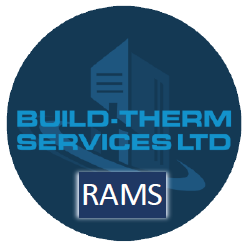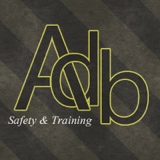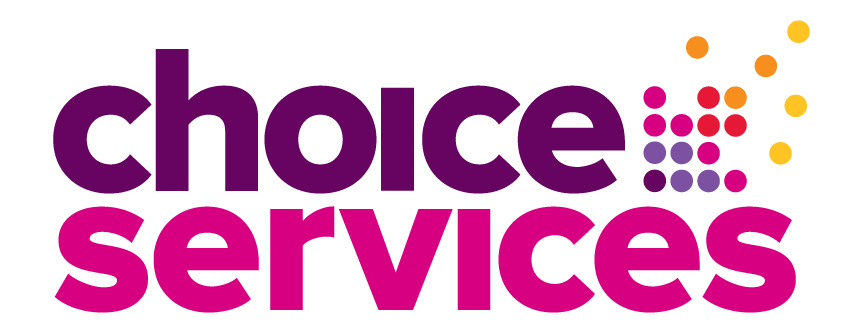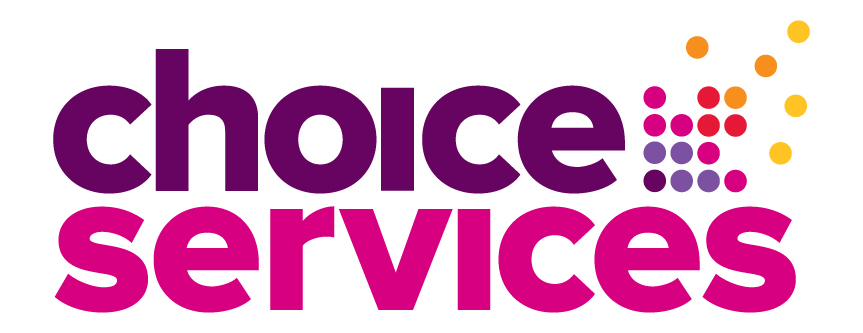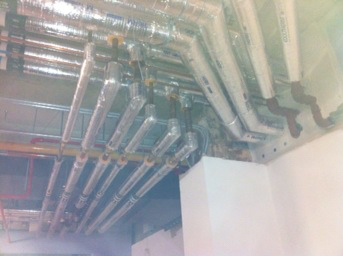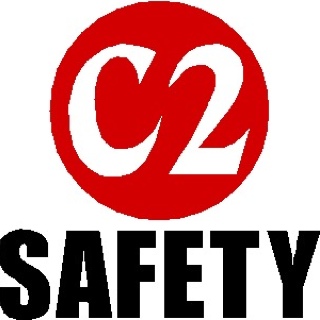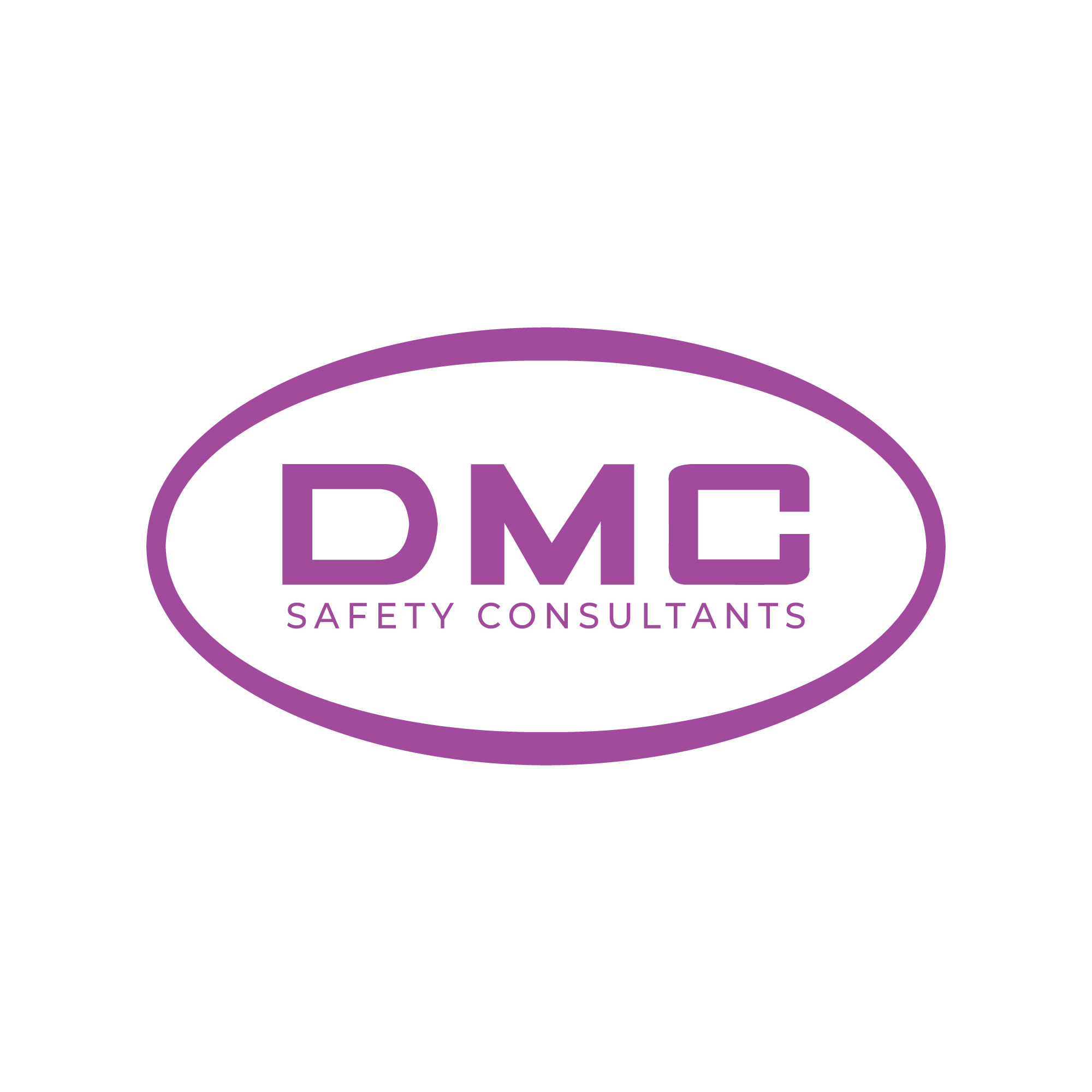Title Page
-
Site conducted
-
Description
-
RAMS No and Rev
-
Prepared by
-
Conducted on
-
Site Location
RAMS Method Statement
-
Description Scope Of Works
-
Project Name
-
Site Address
-
MC Main Contractor
-
Location on Site
-
Addendum & Comments
-
This RAMS document covers all stages of the installation and adjoining details. <br>All lifting operations will be covered separately under Build Therm Services and MC (Construction Main Contractor) Lift Plans.<br>The above-named scope will be strictly installed as per Build Therm Services approved drawings & system specifications for the project.<br><br>
-
Sequence of Operations<br><br>Full elevations/areas are to be handed over to Build Therm Services for a visual check along with marked up elevations of the structure. On the acceptance of the elevation Build Therm Services will proceed to mark-up set out points from Datum’s and grid lines provided by MC (Construction Main Contractor).<br>The majority of works will be undertaken with battery-operated and hand held tools. BTS will require a 110V power supply to the work areas as our operatives will be utilising 110V tools to mix render and 110V angle grinders. All work areas will be accessed via MEWP,Aluminium Tower and scaffold erected and maintained by MC (Construction Main Contractor) . Hot works permits will be issued by MC (Construction Main Contractor) prior to works being undertaken, where required.<br><br>The materials will arrive on site and will be escorted to the unloading area by MC (Construction Main Contractor) traffic marshal. At this point the materials will be off loaded by means of a Moffat and stored in a designated laydown area in readiness for their hoisting.<br><br>Build Therm Services storage areas will be demarcated with physical barriers as will the immediate working areas. (The areas allocated are to be agreed by MC)<br><br>All tools MUST be tethered when working at roof level AT ALL TIMES once off ground level.<br><br>
1. Drawings & Materials & Fixings Details
-
Drawings
-
Materils
-
Fixings
2.Hazards
-
Select existing hazards on site
- Falling objects
- Splashes and sprays of toxic materials
- Slip and trip hazards
- Electrical equipment
- Extreme temperatures
- Noise
- Harmful gases and radiation
- Diseases, viruses
- Working at heights
- Other
-
Other hazards
-
Are the effects of these hazards discussed to all employees?
3.Health & Safety Key Risks and Controls
-
1. All operatives must undergo MC & Build Therm Services Ltd site inductions.<br>2. All operatives to read & sign this method statement before commencing work.<br>3. Exclusion zones for cranes must be in place before commencing work.<br>4. Correct & necessary PPE to be worn at all times, including full-face visors to be worn by pot man when loading hot melt kegs into boilers containing molten material.<br>5. Tool Box talks to be held weekly & one environmental toolbox per month<br>6. Check & assess weather & wind conditions before starting work & monitor during work.<br>7. Materials to be correctly secured at all times. <br>8. Plant & machinery to be used only by competent and trained personnel.<br>9. Scaffold adaptions will only be undertaken by MC (Construction Main Contractor) subsequent to formal requests being agreed between BTS.<br>10. Only work to approve lifting plans.<br>11. Risk assessments attached.<br>12. COSHH assessments will be sent separately. <br>13. Manual handling assessments attached.<br>14. CSCS cards will be carried by all operatives.<br>15. Daily activity briefing (DAB) will be held each morning before works commence and a Good To Go form will be completed.<br>16. Gas bottles will be stored in cages in an area agreed by MC (Construction Main Contractor)<br>17. Supervisor competency to be submitted to MC (Construction Main Contractor) , for all Build Therm Services black hats prior to commencement on site. <br>
4.PPE Discussion
-
1. Head Protection
PPE includes hard hats and headgears and should be required for tasks than can cause any force or object falling to the head. Ensure that there are no dents or deformities on the shell and connections are tightened inside. Do not store in direct sunlight and always replace a hard hat if it was used for any kind of impact, even if damage is unnoticeable.
2. Face and Eye Protection
PPE includes safety goggles and face shields and should be used for tasks that can cause loss of vision and an eye, burns, splashes, sprays of toxic liquids etc. Ensure that there are no cracks or deformities on the lenses, ensure the strap is in good working order and is firmly sealed to the cheek and forehead.
3. Foot Protection
PPE includes knee pads and safety boots and should be used for tasks that can cause serious foot and leg injuries from falling or rolling objects, hot substances, electrical hazards and slippery surfaces. Use boots with slip-resistant soles that protect against compression and impact.
4. Hands Protection
PPE includes safety gloves and should be used for tasks that can cause hand and skin burns, absorption of harmful substances, cuts, fractures or amputations. Ensure that they fit perfectly with no spaces and are free from cuts, burns and chemical residue. Always replace them if any sign of contamination was observed.
5. Body Protection
PPE includes safety vests and suits and should be used for tasks that can cause body injuries from extreme temperatures, flames and sparks, toxic chemicals, insect bites and radiation. Ensure that they are clean and free from cuts and burns. Always get a good fit to ensure full body protection.
6. Hearing Protection
PPE includes ear muffs and plugs and should be used for tasks than can cause hearing problems and loss of hearing. When ensuring hearing safety, the equipment must fit the ear canal perfectly. Recommended types include formable earplugs to fit on different sizes of ear canals.
7. Fall Protection
PPE includes safety harnesses and lanyards and should be strictly used for task that can cause falling from heights and serious injury or death. Ensure that the straps are free from tears, deformities and burn marks and buckles are connected securely and tightly. It is very important to dispose them if used after a falling incident.
8. Respiratory Protection
PPE includes respirators and should be used for task that can cause inhalation of harmful materials to enter the body. Ensure that the equipment is fit-tested and the employee has undergone proper training before wearing one. -
Are PPE available and sufficient to all workers?
-
Do all employees know how to use appropriate PPE?
-
Was there an accident or near miss due to not wearing proper PPE?
-
Are there damaged or worn out PPE which need repair or replacement?
-
Was there an accident or near miss due to faulty PPE?
-
Are there other concerns?
-
Other issues and concerns
5.Recommendations
-
Recommendations
6.General safety precautions and site rules
-
• All site operatives will sign in and out of the site daily.<br>• 5-Point PPE must be worn; Safety footwear, safety helmets, hi-vis vests, eye protection and gloves as stipulated under section 4. <br>• The public and other site personnel’s safety must be maintained at all times.<br>• Use the right tools for the job.<br>• Plant and equipment to be kept in good order and not misused.<br>• Report any safety defects to Site Management.<br>• Smoking is not permitted anywhere on-site. <br>• Check the working environment for hazards before working.<br>• Ensure instructions are fully understood before working.<br>• Maintain personal hygiene.<br>• Be aware of others' safety - do not create hazards.<br>• Always take precautions to prevent materials and tools etc., from falling.<br>• Ensure that debris does not accumulate unsafely.<br>• Do not obstruct access ways unsafely.<br>• Do not carry loads that cannot be lifted comfortably.<br>• Report all accidents and dangerous occurrences immediately to Site Manager<br>
-
Manual Handling, Storing and Unloading<br>• All operatives are to have undertaken manual handling training prior to commencing works on the project;<br>• Manual handling will be kept to the reasonably practicable minimum. Materials are to be delivered to the site by the supplier with these redistributed as close as possible to the work area via a small trolley, where possible; <br>• Where mechanical aids cannot be used to assist in lifting items, team lifting will be employed to carry out the lifting operation (team lifting to be at a ratio of no more than 20 kg per person). Site Management will ensure that Site Personnel are appropriately instructed on safe manual handling techniques and be suitably fit for carrying out manual handling duties.<br>• Operatives must ensure that when carrying materials on the scaffolding that they do so with caution<br>
-
Deliveries<br>• Deliveries will be made direct to site <br>• All deliveries will be made by small rigid vehicles or smaller vehicles due to the restrictive space on site for storage. <br>• Delivery areas are located in places where the delivery vehicles can gain access without causing blocks or congestion to the roads;<br>• Deliveries will be offloaded from the delivery vehicle via either a moffat or a tail lift & pump truck to the storage area provided; <br>• Only the driver of the delivery vehicle is permitted to operate the off-loading equipment (i.e. Moffat & tail lift); <br>• The area where the off-loading to be undertaken is to be determined prior to delivery ensuring that there are no obstacles and the ground is to be checked for firmness and voids; <br>• All personnel involved in the operation are to wear the correct PPE <br>
-
Storage<br>• Materials are to be stored on the ground and protected from water damage. Wet, pre-mixed materials must be stored frost free and protected from extreme heat. <br>• The materials will be stored at the site compound.<br>
-
Welfare Facilities<br>Welfare facilities will be provided and maintained by NC<br>
-
Site Waste Management Handling<br>- Operatives will attend operator training prior to works commencing, to use the hoist, provided MC<br>- In some instances, the CS board may need to be cut at ground level, prior to being loaded into the hoist. This will be assessed in advance of materials being loaded and will depend on the work face that is being distributed. Individual work face assessments will be carried out by the site team along with the DAB’s to cover these activities.<br>- Handling and disposal of waste shall be undertaken in compliance with UK legislation and MC<br>- Waste is to be placed in waste bags. If working at high levels, the waste will be redistributed to the lower level via the hoist provided by MC <br>- Once the waste is at ground level, it will be distributed to the waste storage facilities via hand. As the waste facilities are located on the other side of the road to site, any operative carrying waste to the facility is to be accompanied by MC traffic marshal; <br>
-
Material Resource Efficiency<br>• The specified insulation boards have a designed layout that will be followed. Off cuts will be retained and used elsewhere in the system, where possible; <br>• Waste will be allocated in accordance with MC site waste management plan.<br>
-
Access/Egress Access to the work areas will be made via designated pedestrian access routes across the site; the main passenger/goods hoists/staircases will provide access to each level, by MC. Any operative not satisfied with the working area/ access should immediately advise a manager.<br>
-
Lighting: <br>General access and emergency lighting to be provided by MC.<br>Task-specific lighting will be addressed as and when required.
-
Plant & Equipment <br> See Build Therm Services Ltd Plant register
-
Personnel Training Certification Training certificates are obtained at the point of induction and added to the Training Matrix that will be on file in the Build Therm Services office for inspection.
-
Hazardous Materials & Substances <br>COSHH Register and COSHH Sheets supplied separately
-
Waste Management • The Installation of the above systems has some minor impacts on the environment, mainly waste.<br>• Environmental issues will be managed through inductions, toolbox talks and site inspections.<br>• MC site waste management plan will be reviewed and operatives will follow waste streams as appropriate.<br>• COSHH waste and pallets will be removed from the site by MC.<br>• Any surplus waste i.e. wrappers, offcuts etc. will be separated and placed in the appropriate container / skip. Build Therm Services to remove all waste to a designated area for MC to remove from the site. e-usable packaging will be stored and returned to the supplier as and when it becomes economical to do so<br>• The work area will be tidied as the works proceed. Operatives to ensure that all materials are secure at break times and especially at the end of each working day.<br>• Operatives will be advised (via tool-box talks/inductions) of the weather conditions especially the strengthening / changing wind conditions.<br>• Wastage will be kept to a minimum due to the nature of the works as we can utilise the majority of the material when detailed work is to be carried out.<br>• Pallets are to be returned to the supplier when possible, pallets to be marked at the gate to identify owners.<br>
-
Special Control Measures • All Build Therm Services Ltd operatives will be fully briefed on the Method Statement and attend Project Specific Tool Box talks at least once a week. <br>• The Build Therm Services Ltd site manager will carry out a daily briefing prior to each shift identifying and reiterating any specific controls required for the day’s activities.<br>• Daily briefings are to be undertaken as per company policy<br>• The Main Contractor briefings should also be daily<br>• Any accidents/Near misses are to be reported to Build Therm Services and the PC immediately<br>• Daily permit issued & approved by MC as required<br>• All certifications will be issued at the time of site induction<br>• Fire and Emergency arrangements to be as per the MC Fire and Emergency plan which is covered in the induction process and distributed to the team.<br>
-
Comments
7.MEWPs the working method
-
• Works from MEWP – Scissor Lift or Cherry Picker<br>• MEWPS will only be operated by individuals holding an IPAF certification relative to the machine in use. <br>• Daily checks on the machine are to be made to record the condition of the machine and these checks are to be recorded.<br>• Each machine must have a current certification of thorough examination available for scrutiny.<br>• Operators and those using boom-type MEWPs shall at all times wear harness and restraint lanyards attached to the correct anchor point within the basket of the machine. Operators and users of scissor lift type MEWP’s do not need to use harness.<br>• Prior to any work commencing using MEWP access MC (Construction Main Contractor) must confirm that the ground at the workforce and routes to are suitable for the machine's safe operation. Note these works may be subject to the provision of a licence from the Local Authority for operation of the machine on their property i.e. the highway. The Local Authority’s requirements for such operation will take priority over the content of this Method Statement.<br>• Traffic control may be required as dictated by the terms of the provision of the licence.<br>• Following the issue of such a licence and relative searches to establish if buried services that may affect ground conditions the machine operator must be informed of any hidden or buried services that could be damaged by the machine.<br>• Areas that are identified as weak points are to be protected as necessary either by steel sheets or plywood sheets depending on the conditions established.<br>• The area will be checked for overhead services and obstacles. No machine will be operated close to overhead electrical services.<br>• Pads should be placed under the hydraulic rams of the machine to prevent point loading upon the ground surface.<br>• Additional protection may be required such as plywood sheets to protect the surfaces below from contamination.<br>• Exclusion zones to be placed around the machine by means of pedestrian barriers. <br>• Should the exclusion zone interfere with pedestrian rights of way an alternative protected route must be established using further sets of pedestrian barriers and warning signs to other road users as deemed necessary.<br>• One person to remain at ground level to ensure the exclusion zones are not tampered with and to direct members of the public or other site users away from any hazards that may exist.<br>• Any refuelling of the machine should be undertaken with care. Funnels are used and Spill kit pads to be placed under the machine whilst refuelling takes place.<br>• The machine must not be left on the public highway overnight unless secured behind hoardings which must be illuminated.<br>• Machines must be immobilised when not in use and during break times, keys must not be left in the machines when not attended.<br>
8.Rescue procedures for MEWP’s
-
• 1. Operative suspended by lanyard or injured within platform) If qualified operator is still within the cradle or platform, the horn on the vehicle is to be sounded continually to attract the attention of other site personnel.<br>• 2. The operator will then slowly lower the platform until the suspended or injured individual can be assisted by personnel on the ground.<br>• 3. Operator suspended by lanyard or disabled within the platform) The operative still in the cradle to sound the vehicle horn to attract other site personnel.<br>• 4. The machine is to be stopped by hitting the emergency stop button and the cradle lowered by using the auxiliary lowering function on the machine control panel adjacent to the stop button until such time as the suspended/ injured operator can be assisted by personnel on the ground.<br>• 5. In the unlikely event that both personnel are suspended or injured/disabled, adopt procedures as listed in 4 above. <br>• 6. It is recommended that a test drill of these procedures is carried out to ensure suitably trained personnel are available to carry out these duties in the event of an emergency.<br><br>All operatives involved with the works described above must read this addendum and confirm they have read and understood the content by signing below.<br>Buildtherm supervisor to sign that CSCS and IPAF cards have been checked<br>
9.MEWP & Mobile Tower
-
MEWP inspection
-
Mobile Tower Inspection
10.Access/Egress
-
Access & Egress
11. Risk Assessments
-
Risk Assessments
12.Control Measures
-
Control Measures
13.IPAF ,CSCS Cards , PASMA
-
IPAF ,CSCS Cards , PASMA
14.LOLER
-
Lifting equipment inspection register
15.PUWER
-
Work equipment inspection report, Provisions and Use of Work Equipment Requlation
16.PAT
-
Portable Appliance Test
17.Fall Protection Equipment Inspection Report
-
Safety Harnesses, lanyards, running lines
Confirmation
-
Full Name and Signature of Inspector
-
By signing this, you confirm that the information discussed during this meeting were fully understood.
-
Click + to add signee
Signee
-
Full Name and Signature of Participant
